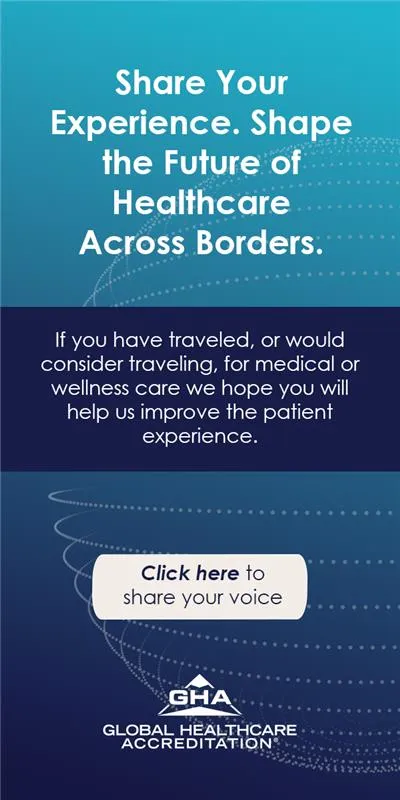In today’s preventive healthcare landscape, full-body exams have become far more sophisticated than the traditional stethoscope-and-blood-pressure routine. With the integration of advanced imaging technologies, these comprehensive assessments offer an unparalleled view into an individual’s current and future health risks. This evolution is particularly significant for medical tourism, where patients increasingly travel abroad seeking access to the latest diagnostic modalities that may not be widely available or affordable in their home countries.
This article explores the most cutting-edge scans currently incorporated in full-body exams, how they work, what they detect, and why they are revolutionizing the concept of early detection and preventive healthcare.
1. Whole-Body MRI (Magnetic Resonance Imaging)
Overview:
Whole-body MRI is a non-invasive, radiation-free imaging technique that uses magnetic fields and radio waves to produce detailed images of internal organs, tissues, and even the smallest anomalies.
Use in Full-Body Exams:
It can detect tumors, musculoskeletal injuries, neurodegenerative disorders, and vascular diseases — often before symptoms arise. With the ability to screen the brain, spine, abdomen, pelvis, and joints in a single session, it is becoming a core component of executive checkups and premium health screenings.
Why It’s Advanced:
Newer versions of whole-body MRI are faster, more comfortable, and can integrate with AI for automated anomaly detection, enhancing diagnostic accuracy.
2. PET/MRI Hybrid Scans
Overview:
This combines the metabolic imaging capabilities of Positron Emission Tomography (PET) with the detailed soft-tissue imaging of MRI in a single scan.
Use in Full-Body Exams:
Primarily used to detect cancer and monitor neurological and cardiovascular disorders, PET/MRI is invaluable for assessing metabolic activity and pinpointing abnormalities at a cellular level — sometimes even before anatomical changes become visible.
Why It’s Advanced:
Unlike PET/CT, PET/MRI exposes patients to significantly less radiation while providing superior soft tissue contrast. It's an ideal option for patients requiring sensitive long-term monitoring or those with elevated cancer risk profiles.
3. Low-Dose CT (LDCT) for Whole-Body Screening
Overview:
Low-dose computed tomography provides cross-sectional images of the body using X-rays but at a significantly reduced radiation level compared to traditional CT.
Use in Full-Body Exams:
LDCT is especially useful in lung cancer screening, early detection of coronary artery disease (CAC scoring), and evaluation of abdominal organs.
Why It’s Advanced:
With the introduction of iterative reconstruction techniques, modern LDCT scans maintain excellent image quality with a fraction of the radiation exposure, making them safer for routine use.
4. Coronary CT Angiography (CTA)
Overview:
Coronary CTA is a non-invasive scan that uses CT technology and a contrast agent to visualize the coronary arteries.
Use in Full-Body Exams:
This scan is integral to detecting silent heart disease, assessing the risk of heart attacks, and evaluating plaque buildup in the arteries — often before any symptoms are reported.
Why It’s Advanced:
Today’s high-speed multi-detector CT machines can capture a beating heart in mere seconds, offering accurate and rapid assessments of coronary health.
5. AI-Integrated Imaging Platforms
Overview:
Artificial intelligence is now being embedded in imaging platforms to assist radiologists in detecting patterns and abnormalities faster and more accurately than ever.
Use in Full-Body Exams:
AI tools can automatically flag suspicious lesions, estimate organ volumes, detect coronary calcium, and even evaluate brain atrophy linked to Alzheimer’s disease.
Why It’s Advanced:
AI reduces human error, improves reporting time, and provides predictive analytics that can be life-saving. Cloud-based AI platforms also allow for second opinions from remote specialists — a major benefit in international health tourism.
6. Ultrafast Ultrasound Imaging (UUI)
Overview:
Unlike conventional ultrasound, UUI captures thousands of frames per second, enabling real-time visualization of organs and blood flow with exceptional clarity.
Use in Full-Body Exams:
Particularly effective in cardiovascular assessments, liver fibrosis detection, and thyroid screening, UUI offers a quick, non-invasive, and radiation-free option for dynamic body scanning.
Why It’s Advanced:
Its high temporal resolution makes it superior for detecting microvascular changes, evaluating muscle function, and identifying subtle abnormalities invisible to standard imaging.
7. Molecular Imaging with Advanced Tracers
Overview:
Beyond standard fluorodeoxyglucose (FDG) used in PET scans, new radiotracers now target specific proteins and receptors involved in cancers, neurodegeneration, and inflammation.
Use in Full-Body Exams:
Emerging tracers can detect amyloid plaques in Alzheimer’s, prostate-specific membrane antigen (PSMA) in prostate cancer, and somatostatin receptors in neuroendocrine tumors.
Why It’s Advanced:
These targeted agents enhance diagnostic precision, helping clinicians tailor early interventions long before structural damage occurs.
8. 3D Bone Densitometry (DXA with Trabecular Bone Score)
Overview:
Dual-energy X-ray absorptiometry (DXA) is the gold standard for assessing bone density. When integrated with Trabecular Bone Score (TBS) analysis, it provides a three-dimensional assessment of bone microarchitecture.
Use in Full-Body Exams:
This scan is particularly relevant in postmenopausal women and aging populations, assessing osteoporosis risk and guiding preventive bone health strategies.
Why It’s Advanced:
Combining TBS with DXA enables earlier detection of bone fragility than DXA alone, offering a better understanding of fracture risk even with normal bone density.
The Role of Advanced Scans in Medical Tourism
Internationally, full-body exams with advanced imaging attract health-conscious travelers seeking early diagnosis, lifestyle optimization, or peace of mind. Patients often find that top-tier diagnostic imaging is more accessible and affordable in leading medical tourism destinations, sometimes bundled into comprehensive executive health checkup packages.
For professionals in the medical tourism industry, offering access to these high-end scans enhances a destination's value proposition. It also aligns with global trends emphasizing proactive and personalized healthcare.
Considerations Before Undergoing Advanced Imaging
While these scans offer remarkable insights, several factors must be considered:
- Overdiagnosis and False Positives: Some scans may detect anomalies that never become clinically significant, potentially leading to anxiety or unnecessary interventions.
- Cost and Accessibility: High-end imaging can be expensive and may not be covered by insurance in every jurisdiction.
- Radiation Exposure: Although reduced in many modern scanners, cumulative radiation from multiple imaging studies remains a concern, especially for younger or asymptomatic individuals.
- Interpretation Expertise: Advanced imaging requires interpretation by specialized radiologists to ensure accuracy and prevent misdiagnosis.
Technology is Reshaping Preventive Medicine
In conclusion, The integration of cutting-edge scanning technologies into full-body exams is redefining preventive healthcare. From AI-powered MRIs to hybrid PET/MRI platforms and ultrafast ultrasound, these tools enable early disease detection and personalized health planning with unmatched precision. For medical tourists and providers alike, offering these advanced diagnostics signals a commitment to excellence and a proactive approach to wellness.
As patient expectations evolve, so too must the industry’s offerings — and embracing advanced imaging is a critical step in meeting the demands of the next generation of healthcare consumers.
If you're considering this treatment, Better by MTA is here to help. Through our exclusive partnership with Mastercard, we connect you to trusted hospitals and doctors worldwide, ensuring price transparency and secure, flexible payment options. Whether you're looking to use a credit card, bank transfer, or explore upcoming patient financing options, we make your medical journey seamless and worry-free.
Get started today and book confidently without hidden fees or financial risks. Click the link below to request a free quote: https://www.better.medicaltourism.com/get-a-quote













